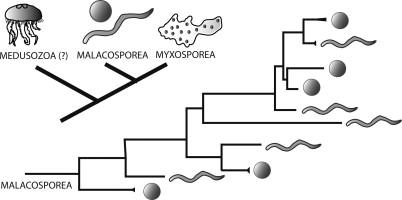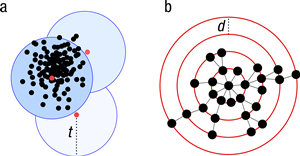Previous events - Page 81
"Global DNA methylation and persistent organic pollutants in ringed seals (Phoca hispida) from Svalbard and the Baltic Sea"
This week we will read an a bit more ecological paper on hybridization and evolutionary outcomes entitled "Hierarchical behaviour, habitat use and species size differences shape evolutionary outcomes of hybridization in a coral reef fish" by Gainsford and colleagues to be published in Journal of Evolutionary Biology. Please note that the meeting will take place at a different location this time!
Friday seminar by Arnaud Le Rouzic. NEW TIME: 12.15
This week we'll be learning when species richness should be energy limited (I think the right answer is "sometimes"), and more interestingly; how would we know? An idea and perspective paper by Hurlbert and Stegen in Ecology Letters 2014.
Same time, same place, same people. Welcome!
This week we’ll move away from the opisthokonts, and will talk about a group of rhizarian parasites; the phytomyxids.
The effect of intermittent hypoxia on Hypoxia inducible factor 1α in rat skeletal muscle.
Bank et al. (2014) looks like the perfect paper for a TGAC discussion: Highly relevant (arguing that selective sweep detection needs to take demography and background selection into account), brand new (currently in press corrected proof), and short (7 pages). So let's have a TGAC meeting on Tuesday, at 1 pm as usual.
This week we'll be discussing a paper by Brockhurst and co-workers in Proceedings B: Running with the Red Queen: the role of biotic conflicts in evolution
At the parasite journal club this week we will try again to discuss the myxozoans, a weird group of parasites within the opisthokonts. They are a strange group of microscopic sized metazoans related to the Cnidaria, and are found in aquatic habitats where they act as parasites of fish, amphibians, reptiles and rarely invertebrates.
The paper we will discuss on Thursday will be presented by Håvard.
SWARM: robust and fast clustering method for amplicon-based studies
”Sperm Morphology, Sperm Motility and Paternity Success in the Bluethroat (Luscinia s. svecica)”
2-day conference on the history of plague, at the Norwegian Academy of Science and Letters, with summarizing thoughts of Jared Diamond. Please register.
Late lunch talk by Melissah Rowe
Friday seminar by Annelise Binois
This week we will discuss a paper entitled "Maximum likelihood inference of reticulate evolutionary histories" by Yu and co-authors from PNAS. The paper presents a new method for inferring reticulate evolutionary histories while accounting for incomplete lineage sorting.
Nanoparticle-based delivery of efflux pump inhibitors and antibiotics to treat mycobacterial infections
In a second edition of TGAC-with-original-authors, we'll discuss Marcussen et al. (2014), a recent Science paper on ancient hybridization of polyploid wheat genomes. The first author Thomas Marcussen will join our discussion, and since Kjetill Jakobsen was involved in the study, we may even have two authors present to answer all our questions. We're switching back to the old meeting time, starting at 1 pm.
This week we'll be discussing a box fresh paper by Tanja Stadler and co-workers in American Naturalist: On Age and Species Richness of Higher Taxa
This week we will discuss another weird group of parasites within the opisthokonts, the myxozoans. They are a strange group of microscopic sized metazoans related to the Cnidaria, and are found in aquatic habitats where they act as parasites of fish, amphibians, reptiles and rarely invertebrates.
This Thursday (6th of November) we will talk more about Illumina sequencing. The paper from last time that compares Illumina with Ion Torrent (Salipante et al. 2014) will be discussed this week. We also want to discuss a paper that have used the Illumina platform to look at microbial community composition and diversity (Sinclair et al. 2014).
Friday seminar by Thomas Marcussen
”Acoustic startle responses in European sprat (Sprattus sprattus L.) and diploid versus triploid Atlantic salmon fry (Salmo salar L.)”
In a sort of a special edition of the TGAC journal club, we hope to finally find out whether Thor Heyerdahl was right after all with his claims regarding early contact between the cultures of South America and Easter Island, whether his Kon-Tiki expedition in 1947 was just a fun cruise across the Pacific without any scientific substantiation, or whether genomic data actually supports his ideas. We will find the answers in the very recent paper by Moreno-Mayar et al. (2014), which just came out in Current Biology and comes with a commentary in Science. Four of the authors are working at the University Hospital here in Oslo, and at least two of them will join our discussion!
As there will be a CELS meeting this Tuesday at 1 pm, the TGAC discussion will be earlier than usual, at 11 am.
An investigation of the functional role of the MADS-box γ and MADS-box α type I transcription factors: AGAMOUS-LIKE 28 and AGAMOUS-LIKE 36

